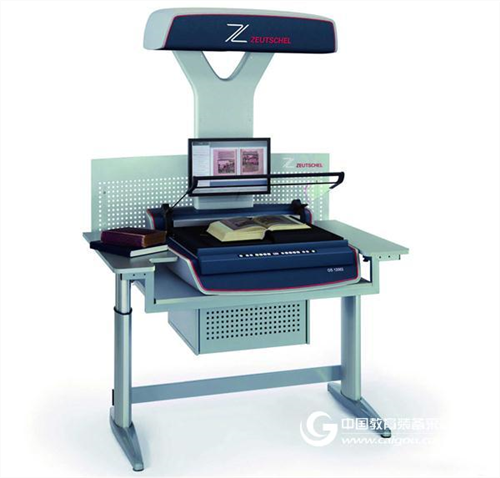To photocopy ancient books, you must first photograph the ancient books and then make plates. Therefore, before photography was introduced and introduced, China’s publication of ancient books was not known to use photocopying. But there was a similar method at the time, that is, an ancient book was still engraved. This has a special term in the version of the book called "inscription", it can also be called "shadow", sometimes called "imitation". However, the term "imitation" is used as if it is not safe enough, because it is only called "imitation". It is better to use "resection" and "shadow" to get it.

Whether it is useful to engrave this method in the Song and Yuan Dynasties, because there are too few Song Yuan Yuans that have been handed down, and it is difficult to find out. In the Ming Dynasty, there were indeed engravings. There is a collection of Yuan Dao's "Luo Yuan Xue Gu Lu", which is Ming Jingtai's time book, but the font and layout are exactly the same as Yuan Jianyang's engraving. The predecessors have been engraved according to the Yuan engraving, and they believe that they are directly pasted with Yuan seals. Go to the book board to engrave. This is very likely, because in the early Ming Dynasty, the Yuan Dynasty was not as precious as it was later, and it would not be a pain to sacrifice a Yuanshi book for the book. However, because it was not very precious at the time and even the Song Dynasty, it was not necessary to preserve the original features of the Song Yuan engravings when engraving books, and often prefer to re-write the songs and layouts of the Song and Yuan Dynasties. Later, Ming Jiajing was more imitation of the Southern Song Dynasty, but it was just a version of its imitation. Its font was more standardized, and there was no intention to trace the European characters of the Southern Song Dynasty, so it was not a cover. In the early Qing Dynasty, there was a kind of font in the writing, which is quite similar to the Southern Song Dynasty. For example, Zhang Shijun’s "Ze Cuntang Five Kinds" is the most exquisitely carved, and the layout is also regulated by Song Ben, but it is still not The engraving can only be regarded as a copy of the Song.
Qianlong, Jiaqing, and Daoguang were more popular when they read the Song Dynasty. Because at that time, not only Songben was extremely valuable, but the pursuit of Song Dynasty, the so-called "Song Song" has become a fashionable thing. It is the copy of the shadow of the Maoist ancestral hall in the early Qing Dynasty, that is, the so-called "hair copy", has also been regarded as only Yasong was first cherished and collected. According to the Song style, the book can satisfy the requirements of the "Song and Song" to a certain extent, and can also raise the identity of the engraved book. The person who engraved the book is not happy with it. (There is a Sun Xingyan imitation of the Song engraving. The original print of the word, the title page is marked with the "Zhu Ji of each work price of silver five two", the grain of silver five or two is equivalent to the price of a small collection of books in the Southern Song Dynasty. However, this imitation of the Song Dynasty has been re-written by the people at the time of publication, which is not very similar to the original Song. For example, Hu Kejia's imitation of the Yuan dynasty "Zi Zhi Tong Jian", originally was Jianyang carved face characters, Hu Ben was engraved into European characters. Hu's use of the Southern Song Dynasty Chiyang County Zhaiben imitation of the "Selected Works" is also the case, the original slightly with the body, Hu Ben also engraved into the European body. Therefore, these engravings can only be imitation, still not engraved.
The real engraving was only popular in the late season. The earliest was the "Gu Yi Series" edited by Li Weichang in Japan in the early years of Guangxu. Originally, the technique of the Japanese to engrave the old books of the Song and Yuan Dynasties was very high. There was a Japanese-style celebration of the Yuan Dynasty (equivalent to the Ming Wanli). Outside the decor, it is almost indistinguishable from the Yuan. Li Yuchang's "Gu Yi Series" was edited by Yang Shoujing, a version expert. He chose to write in the Song Yuan and the ancient writings of Japan, and asked the Japanese Kimura Kato master to write and engrave. It can be described as very realistic. Since then, the old books of the Song and Yuan Dynasties have gradually become popular in the country. In the early years of the late Republic of China, many collectors, such as Yi Feng’s Yi Feng Tang, Xu Naichang’s Ji Xue Zhai, Jiang Yuzao’s Mi Yun Building, Zhang Yuheng’s Garden, Liu Shizhen’s jade Haitang, Liu Chenggan's Jiayetang, as well as Tao Xiang and Dong Kang, have engraved a lot, or a single line, or merged into a series of books. Among them, in Shanghai, the Huanggang people Tao Zilin, who is good at this work, was trained by the Liulichang Wenzizhai in Beijing. The exquisiteness of the engraving was only slightly inferior to the Gu Yi Series.
Photocopying the old book, the ancient book, grew up in the air of this ancient book.
Women's PU Backpack,Luggage Backpack,Mountain Backpack,Camouflage Backpack
Longzhao Technology (Guangdong) Company Limited , https://www.princebag.com